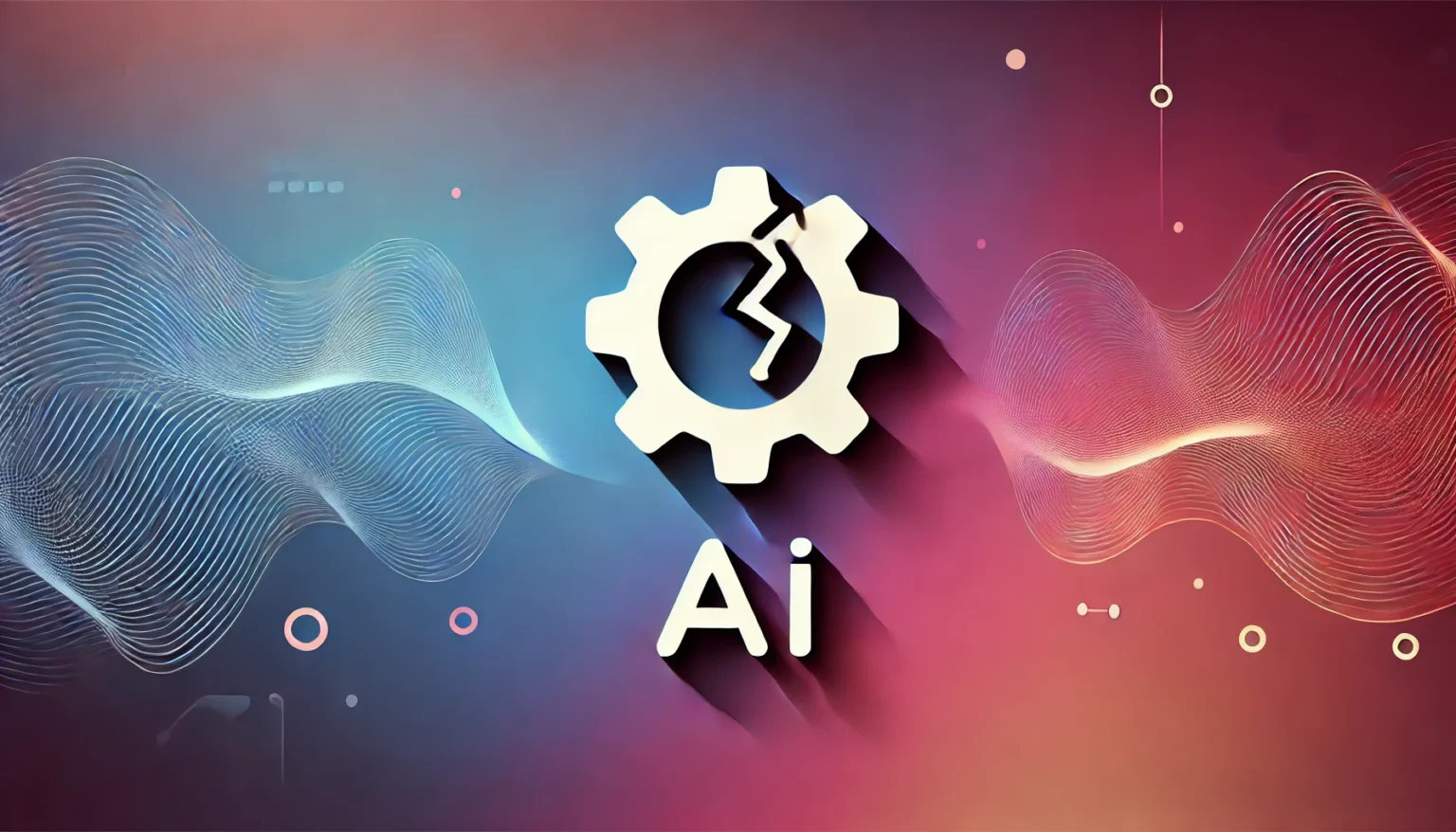Welcome to the fascinating world of artificial intelligence, where innovation meets complexity. Among the many topics within AI, one that has caught significant attention is “unstability.” If you’ve stumbled upon the term Unstability AI 862 5790522 NJ, you’re not alone. This burgeoning field raises vital questions about how and why AI systems sometimes fail to deliver consistent results.
As we navigate through this blog post, we’ll unravel what makes AI unstable and explore its implications across various industries. From healthcare dilemmas to financial pitfalls and autonomous vehicle risks, understanding this phenomenon could be crucial for developers, businesses, and consumers alike. Buckle up as we delve into a comprehensive guide on unstability in artificial intelligence; you might just find answers—or at least some intriguing insights—on this complex issue!
What Is Unstability AI 862 5790522 NJ?
Unstability AI 862 5790522 NJ refers to the unpredictable nature of artificial intelligence systems operating within New Jersey’s tech landscape. This instability can manifest in various forms, such as inconsistent outputs or unexpected behaviors in applications.
At its core, it signifies challenges that arise when AI models fail to perform reliably. The number “862 5790522” serves as a unique identifier for specific instances or case studies related to this phenomenon, drawing attention from researchers and developers alike.
As businesses increasingly rely on AI technologies, understanding what constitutes this unstability becomes crucial. Factors like data integrity and algorithmic design play significant roles in shaping outcomes. By examining these elements, stakeholders can better address the issues at hand and work towards more robust solutions.
The Science Behind AI Instability
AI instability is a complex phenomenon influenced by various scientific principles. At its core, it involves how algorithms process data and make predictions. When an AI model encounters unexpected inputs or scenarios, it can lead to unpredictable behavior.
One critical aspect is the mathematical foundations of machine learning. These algorithms rely on statistical methods that may not always capture real-world complexities accurately. When they are pushed beyond their training limits, inconsistencies often arise.
Moreover, neural networks strive to mimic human cognition but can easily misinterpret patterns in data. A minor error in input can compound, resulting in significant flaws in output decisions.
The dynamic nature of AI systems means they continuously learn from new information. This evolving characteristic poses challenges since models must adapt quickly without losing stability or accuracy over time. Understanding this delicate balance is crucial for advancing reliable AI technologies.
Causes of AI Unstability
AI unstability stems from several underlying causes that can significantly impact its performance.
Flaws in data training models are a primary concern. If the data used for training lacks diversity or quality, the AI may misinterpret patterns, leading to unpredictable outcomes.
Hardware and software limitations also play a critical role. Outdated technology can struggle to support modern algorithms effectively, resulting in inconsistent results.
Overfitting and underfitting further complicate matters. Overfitting occurs when an AI model learns too much from specific datasets without generalizing well, while underfitting happens when it fails to capture essential trends altogether.
Inconsistent learning patterns disrupt the training process as well. When an algorithm encounters erratic input data during learning phases, it cannot adapt properly—creating instability in its decision-making capabilities. Each of these factors contributes uniquely to the broader issue of AI unstability.
1. Flaws in Data Training Models
Flaws in data training models can severely undermine AI performance. These models rely on the quality and diversity of the input data they receive. If this data is biased or incomplete, it leads to inaccurate predictions and unreliable outcomes.
For instance, using historical datasets that reflect societal biases may cause AI systems to perpetuate discrimination. This can happen in various fields such as recruitment, lending, and law enforcement.
Moreover, when a model is trained with limited data points, its ability to generalize diminishes significantly. The result? An artificial intelligence system that struggles when faced with real-world scenarios outside its training environment.
It’s essential for developers to evaluate their training datasets rigorously. Addressing these flaws not only enhances performance but also builds trust among users who depend on AI technologies for critical decision-making tasks.
2. Hardware and Software Limitations
Hardware and software limitations play a crucial role in AI unstability. These constraints can lead to inefficiencies that hinder performance.
For instance, outdated hardware may struggle to process complex algorithms efficiently. This can result in slow response times and inaccurate outputs. If the processing power is insufficient, even the best training models cannot perform optimally.
Software issues also contribute significantly to instability. Bugs or compatibility problems may arise when integrating new AI technologies. Inconsistent updates can further complicate matters.
Moreover, memory capacity plays a pivotal role as well. Limited storage affects how much data an AI system can handle simultaneously, leading to potential inaccuracies during decision-making processes.
As technology evolves rapidly, staying ahead of these hardware and software challenges becomes essential for developers aiming for stability in their AI applications.
3. Overfitting and Underfitting Issues
Overfitting and underfitting are two critical challenges in artificial intelligence models.
When a model overfits, it learns the training data too well. It memorizes every detail, including noise and outliers. This results in poor performance on new, unseen data because the model fails to generalize.
On the flip side, underfitting occurs when a model is too simple. It doesn’t capture underlying patterns within the training data effectively. Consequently, its predictions lack accuracy across both training and testing sets.
Balancing these extremes is crucial for building effective AI systems. Striking this balance requires careful tuning of algorithms and parameters throughout development.
Data scientists often use techniques like cross-validation to identify optimal complexity levels for their models. By doing so, they can achieve better predictive power while minimizing errors associated with either scenario.
4. Inconsistent Learning Patterns
Inconsistent learning patterns can severely compromise AI stability. When an AI system lacks a consistent approach to learning, it may yield unpredictable results.
These patterns emerge from various factors, including erratic data inputs and fluctuating operational environments. For example, if training datasets vary significantly over time, the model struggles to adapt effectively.
This inconsistency prevents the AI from forming reliable associations between input and output. As a result, its predictive capabilities diminish sharply.
Moreover, inconsistent performance can lead to user distrust in the technology. Users expect reliability; when that expectation isn’t met due to erratic learning behaviors, applications become less effective.
Addressing these patterns requires careful monitoring during training phases. By ensuring that models encounter stable conditions and high-quality data consistently, we can enhance overall performance and trustworthiness in AI systems.
The Impact of Unstability on AI Performance
AI performance hinges on stability. When systems are unstable, they often produce erratic results that undermine trust. This unpredictability can lead to poor decision-making in critical applications.
For instance, in healthcare, an unstable AI might misdiagnose a condition. Such errors not only jeopardize patient safety but also strain resources as medical teams scramble to correct these mistakes.
In finance, flawed algorithm outputs can result in significant monetary loss. Traders relying on inconsistent data may face unexpected market shifts that could have been avoided with stable AI systems.
Moreover, user experience suffers when interactions with AI become unpredictable. Users expect reliability; instability breeds frustration and skepticism toward technology.
The ripple effects of AI unstability extend beyond individual industries, impacting overall societal perceptions of artificial intelligence and its potential benefits.
Understanding Code 862 5790522
Understanding Code 862 5790522 involves grasping its significance within AI frameworks. This code acts as a marker, helping developers categorize and troubleshoot issues related to instability.
Each component of the code reflects specific parameters influencing artificial intelligence behavior. Recognizing these elements can aid in identifying patterns that lead to unpredictable outcomes.
The interplay between data inputs and algorithmic processing is vital here. A minor flaw can cascade into larger problems, making it essential for engineers to pay close attention to this numerical reference.
By dissecting the implications of Code 862 5790522, practitioners gain insight into potential vulnerabilities within their systems. This understanding promotes more robust solutions tailored to mitigate risks associated with unstable AI performance.
The Role of NJ in AI Unstability
New Jersey plays a pivotal role in the landscape of AI technology. As a hub for innovation, many tech startups are based here. This environment fosters experimentation with advanced algorithms and systems.
However, this rapid development can lead to instances of unstability in AI models. The proximity to leading universities encourages collaboration but also increases competition for data resources. Mismanagement or flawed datasets can arise from these dynamics.
Moreover, NJ’s diverse industries—from finance to healthcare—rely heavily on AI applications. Each sector faces unique challenges that contribute to instability issues within their specific algorithms.
The state’s regulatory framework is still adapting to these technological advancements. This creates a gap where companies may not be held accountable for unstable AI practices, potentially jeopardizing public trust and safety.
Understanding New Jersey’s influence helps illuminate the broader implications of unresolved issues surrounding artificial intelligence stability.
Solutions to AI Unstability
Improving data integrity is paramount. High-quality, relevant datasets can drastically reduce instances of AI instability. Organizations must prioritize cleaning and validating their data to ensure they feed reliable information into their models.
Better hardware solutions also play a crucial role. Upgrading computational resources allows for more efficient processing and reduces bottlenecks that lead to unstable performance. Investing in state-of-the-art technology ensures systems can handle complex computations seamlessly.
Algorithm adjustments are essential as well. Fine-tuning existing algorithms or developing new ones can help mitigate issues like overfitting or underfitting, directly addressing the roots of instability in AI outputs.
Collaboration among developers, researchers, and industry experts fosters an environment focused on innovation and stability. Sharing knowledge leads to collective problem-solving strategies that enhance the robustness of AI systems across various applications.
1. Improving Data Integrity
Improving data integrity is crucial in addressing AI unstability. High-quality, reliable data forms the backbone of any successful AI model. Without it, algorithms may produce erratic results.
One effective approach is implementing robust validation processes. Consistently checking for errors and inconsistencies ensures that only accurate data feeds into training models. This proactive stance can significantly enhance performance.
Additionally, organizations should prioritize diverse datasets. A wide array of input helps prevent biases that lead to unstable outcomes. By including varied perspectives and scenarios, AI systems become more resilient.
Regular audits also play an essential role in maintaining data integrity. By reviewing datasets periodically, companies can identify outdated or irrelevant information that could skew results.
Investing time and resources into improving data quality ultimately paves the way for stable and reliable AI applications across various industries.
2. Better Hardware Solutions
Better hardware solutions play a crucial role in addressing AI instability. As technology progresses, the demand for robust systems grows. Enhanced hardware can significantly improve processing speeds and data handling.
Investing in high-quality GPUs and TPUs ensures that complex algorithms run smoothly. These components are adept at managing vast datasets, reducing the chances of errors during training.
Furthermore, using more memory allows models to operate with larger input sizes without crashing or slowing down. This upgrade is vital for applications requiring real-time analysis and decision-making.
Additionally, incorporating reliable cooling systems prevents overheating—an often overlooked factor that contributes to performance inconsistencies.
By prioritizing these advancements, organizations can build a solid foundation that minimizes risks associated with unstable AI environments.
3. Algorithm Adjustments
Algorithm adjustments play a critical role in tackling AI unstability. By refining algorithms, developers can enhance performance and reliability.
Tweaking existing models is often necessary. Algorithms that don’t adapt well to new data or changing environments risk failure. Developers must continually assess their systems for effective learning patterns.
Moreover, dynamic adjustment methods can be implemented. Techniques like reinforcement learning allow algorithms to evolve based on real-time feedback, improving decision-making processes.
This adaptability helps mitigate issues related to overfitting and underfitting. It allows the model to generalize better across various scenarios, reducing errors significantly.
Developers should prioritize flexibility within their designs. Creating modular algorithm frameworks enables easier updates as challenges arise in unpredictable settings.
Through these adjustments, AI systems become more robust against instability threats while maintaining efficiency in diverse applications.
Unstability AI 862 5790522 NJ in Industry Applications
Unstability AI 862 5790522 NJ presents unique challenges across various industries. In healthcare, for instance, inaccurate algorithms can lead to misdiagnoses or ineffective treatments. This risk may compromise patient safety and trust in technology.
In finance, unstable AI systems can cause significant errors in trading algorithms. Market predictions might go awry due to inconsistent data interpretations. Such instability can lead to financial losses and increased market volatility.
Autonomous vehicles rely heavily on stable AI for safe navigation. Unpredictable behavior from the AI could result in accidents or unsafe driving scenarios, raising questions about liability and safety standards.
These industry-specific issues highlight the pressing need for solutions that address the underlying causes of unstability in AI systems. As industries increasingly depend on artificial intelligence, ensuring stability becomes paramount for their success and reliability.
1. Healthcare and AI Instability
Healthcare stands on the brink of a technological revolution, where AI plays a crucial role. However, instability in these systems can have dire consequences.
Imagine an algorithm designed to predict patient outcomes faltering due to flawed data inputs. This could lead doctors down the wrong path during critical decision-making moments.
AI’s inability to adapt consistently may also result in misdiagnoses or inappropriate treatment plans. When algorithms learn from inconsistent datasets, they produce unreliable results that undermine trust in technology.
The stakes are high when lives hang in the balance. As healthcare increasingly relies on AI for efficiency and accuracy, addressing stability becomes paramount.
Providers must prioritize system robustness alongside innovation. Patients deserve solutions that not only work but are dependable and precise too. Ensuring stable AI is essential for fostering confidence among both medical professionals and patients alike.
2. Financial Sector Challenges Due to AI Unstability
The financial sector faces unique challenges stemming from AI unstability. Algorithms that manage investments can falter when trained on flawed data. This leads to poor decision-making, risking substantial losses for investors.
Moreover, the high-speed nature of trading systems amplifies these risks. A minor glitch in an AI model can trigger a cascade of erroneous trades within milliseconds, destabilizing markets and eroding trust among stakeholders.
Another significant concern is regulatory compliance. Financial institutions must adhere to stringent regulations, but unstable AI may produce inconsistent results. This unpredictability complicates audits and increases the risk of non-compliance penalties.
Customer interactions are at stake. Chatbots powered by unstable AI might misinterpret client inquiries or provide incorrect information. Such errors can damage relationships and tarnish a company’s reputation in an industry where trust is paramount.
3. Autonomous Vehicles: How Unstable AI Poses Risks
Autonomous vehicles rely heavily on AI to navigate safely and efficiently. When this technology is unstable, the consequences can be dire.
Unstable AI in self-driving cars can lead to erratic behavior. For instance, an unexpected obstacle might not trigger appropriate responses. This could result in accidents or even fatalities.
Moreover, real-time decision-making is crucial for autonomous driving. If the algorithms struggle with stability, they may misinterpret road conditions or traffic signals. Such errors compromise passenger safety and undermine public trust in the technology.
The situation becomes more complex when considering varying environments. A vehicle operating well in one area might fail dramatically in another due to unpredictable AI performance. This inconsistency raises serious concerns about deploying these systems widely without rigorous checks and balances.
As developers strive for perfection, understanding unstability must remain a priority for future advancements in autonomous vehicle technology.
4. The Future of AI Stability
The future of AI stability hinges on advancements in technology and our understanding of machine learning. As we refine algorithms, the capacity to maintain stable AI systems will likely improve.
Innovations like quantum computing may offer solutions that traditional hardware cannot achieve. This could lead to more robust data processing capabilities, reducing instability risks.
Collaboration among tech developers is also essential. By sharing insights and strategies, the industry can address common issues related to unstability effectively.
Regulatory frameworks are gaining traction as well. These guidelines aim to ensure ethical practices in AI development, contributing significantly to overall stability.
Moreover, investment in education for developers will pave the way for a new generation skilled at creating resilient systems. Understanding potential pitfalls from the start can help mitigate future challenges associated with unstable AI technologies.
Case Study 1: AI Instability in Financial Systems NJ
The financial sector in New Jersey has faced significant challenges due to AI instability. One prominent case involved an algorithm used for credit scoring. The system, initially designed to streamline approvals, began producing erratic results.
Unexpected fluctuations led to some individuals receiving unfavorable scores. This created a ripple effect across lending institutions. Trust in automated decisions diminished as clients questioned the reliability of AI-driven assessments.
Regulatory bodies initiated investigations into these discrepancies. They highlighted the importance of transparent data practices and robust training models. Financial companies started revisiting their algorithms and examining underlying datasets more closely.
This scrutiny revealed gaps in historical data inputs that contributed to biases in decision-making processes. As a result, firms began investing heavily in improving their systems, aiming for greater stability and accuracy moving forward.
Case Study 2: Unstable AI in Healthcare NJ
The healthcare sector in New Jersey has witnessed several instances of unstable AI impacting patient care. One striking case involved an AI system designed to predict patient deterioration. Initially, it showed promise by identifying at-risk patients.
However, as the system was deployed, discrepancies began to emerge. The algorithm struggled with diverse datasets from various hospitals, leading to inaccurate predictions and delayed interventions. This raised alarms among medical professionals relying on its insights for critical decisions.
Another complication arose when integrating the AI tool with existing hospital infrastructure. Compatibility issues led to inconsistent data flows, further exacerbating performance problems. Healthcare practitioners found themselves questioning what had seemed like a revolutionary solution.
Patients’ safety is paramount in healthcare; thus, these challenges highlighted the importance of robust testing and validation processes before deploying AI systems widely in clinical settings.
Ethical Implications of Unstability in AI
The ethical implications of unstable AI systems are profound. When algorithms produce unpredictable outcomes, they can impact lives in unexpected ways. This uncertainty raises questions about accountability.
Who is responsible when an autonomous vehicle fails to react appropriately? The developer, the manufacturer, or even the user might face scrutiny. Without clear lines of responsibility, trust erodes.
Moreover, biases inherent in flawed training data can lead to discrimination against certain groups. An unstable AI may inadvertently amplify these biases, leading to unfair treatment in critical areas like hiring or law enforcement.
Transparency also suffers with instability. Users deserve clarity on how decisions are made—an area where many AI models fall short due to their complex nature.
Addressing these ethical concerns requires collaboration among technologists, ethicists, and regulators. As we venture further into this digital age, vigilance is vital for ensuring that AI serves humanity fairly and responsibly.
Challenges in Fixing AI Unstability
Fixing AI unstability presents several challenges that can hinder progress. One of the primary issues is the complexity of algorithms. These systems often operate in unpredictable ways, making it difficult to pinpoint where instability arises.
Another challenge lies in data quality. Training models rely on accurate and diverse datasets. If these datasets contain biases or inaccuracies, the resulting AI behavior can become erratic.
Hardware limitations also play a significant role. Many existing infrastructures struggle to support advanced AI solutions, leading to performance bottlenecks.
Moreover, collaboration across various disciplines is crucial but often lacking. Engineers, data scientists, and industry experts must work together seamlessly to address this multifaceted problem.
Regulatory hurdles add another layer of complication as well; compliance with emerging laws while driving innovation requires delicate balancing acts from developers and organizations alike.
AI Stability vs. AI Unstability: A Comparative Analysis
AI stability represents reliability and predictability in outcomes. A stable AI system consistently performs well within set parameters, providing users with trustworthiness. This fosters confidence, especially in sensitive applications like healthcare or finance.
On the other hand, AI unstability can lead to erratic results. These systems may behave unpredictably under varying conditions. Such unreliability raises ethical concerns and potential risks for end-users.
The contrast is stark: while stability enhances user experience and promotes wider adoption of technology, instability can hinder progress and innovation. Organizations must strive for balance; understanding that even small inconsistencies can have significant repercussions.
Investing in robust training data and refining algorithms contributes to a more stable environment. As industries increasingly rely on AI technologies, recognizing the differences between these two states becomes crucial for future advancements.
Government Regulations on AI Unstability
Government regulations surrounding AI unstability are gaining momentum. As artificial intelligence becomes more integrated into daily life, the need for oversight grows.
Regulatory bodies are working to establish guidelines that address potential risks associated with unstable AI systems. These frameworks aim to ensure safety and reliability in applications ranging from healthcare to finance.
Proposed measures include mandatory testing protocols before deployment. This step could help identify flaws early in development, reducing the chances of malfunctioning algorithms affecting real-world outcomes.
Transparency is another focus area. Regulators encourage companies to disclose how their AIs function and learn. This openness can lead to greater accountability among developers, fostering a culture of responsibility within the tech community.
As discussions evolve, stakeholders must balance innovation with safety concerns. The challenge lies in crafting rules that promote progress without stifling creativity or technological advancement.
AI Unstability in NJ s Tech Startups
New Jersey’s tech startups are at the forefront of innovation, but they also face unique challenges related to AI unstability. With rapid development cycles, these companies often prioritize speed over thorough testing. This can lead to unstable algorithms that yield unpredictable results.
The diverse range of data used in training models adds another layer of complexity. Many startups rely on limited datasets, which may not capture the full spectrum needed for robust AI performance.
Moreover, the technology landscape is ever-evolving. Startups frequently adopt new tools and frameworks without fully understanding their implications on stability. As a result, businesses risk producing unreliable products that could damage their reputations.
Investors and consumers alike are becoming more aware of these issues. The quest for stable AI solutions is vital both for success and sustainability in this competitive environment. Addressing instability will be crucial as New Jersey’s tech scene continues to grow.
Global Perspective on AI Unstability
AI unstability is not confined to any single region. It’s a global phenomenon affecting various industries across continents.
Countries like the United States and China are at the forefront of AI innovation but face significant challenges. In Europe, strict regulations aim to address these instabilities while promoting ethical practices in AI development.
Developing nations encounter different hurdles. Limited resources can exacerbate issues related to data quality and algorithm performance, leading to unstable systems that hinder progress.
International collaboration is crucial in tackling these problems. Shared knowledge can lead to improved training models and robust frameworks that enhance stability worldwide.
Cultural factors also play a role. Different regions may prioritize certain applications of AI over others, influencing how instability manifests within those contexts.
The stakes are high as sectors such as healthcare, finance, and transportation rely increasingly on stable AI solutions for safety and efficiency.
The Role of AI Developers in Preventing Unstability
AI developers play a pivotal role in addressing the challenges of AI unstability. Their expertise is essential in designing robust algorithms that minimize errors and inconsistencies.
By focusing on data integrity, they can ensure that training models are fed high-quality inputs. This significantly reduces the risk of flawed outcomes.
Moreover, developers must understand hardware limitations. They need to optimize their code for various platforms to achieve stable performance across different environments.
Collaboration with data scientists also enhances learning processes. Together, they tackle issues like overfitting and underfitting by refining model parameters.
Continuous monitoring is crucial too. Developers should implement feedback loops to detect anomalies early, allowing for swift corrective actions before problems escalate.
Proactive engagement from AI developers fosters an ecosystem where stability thrives, paving the way for reliable applications in diverse industries.
Conclusion
Navigating the complexities of unstability AI 862 5790522 NJ reveals a multifaceted landscape that is both challenging and promising. Understanding the roots of instability in artificial intelligence provides valuable insights for developers, businesses, and academia alike.
As industries increasingly rely on AI technologies, recognizing the implications of unstable systems becomes crucial. The healthcare sector grapples with potential errors that could affect patient outcomes, while financial institutions face risks that can shake market confidence. Autonomous vehicles highlight the real-world dangers posed by unpredictable AI behavior.
Addressing these challenges requires collaboration among various stakeholders. Solutions such as improving data integrity, investing in better hardware configurations, and refining algorithms are fundamental steps toward enhancing stability.
The ethical implications cannot be overlooked either; how society approaches these challenges will shape public trust in technology moving forward. As New Jersey’s tech startups innovate within this space, their experiences may serve as vital lessons for others globally.
While the conversation around unstability may provoke questions about reliability and safety today, it also opens doors to innovations aimed at fostering more robust AI systems tomorrow. Emphasizing preventive measures can pave the way for a future where artificial intelligence operates reliably across all applications.

















